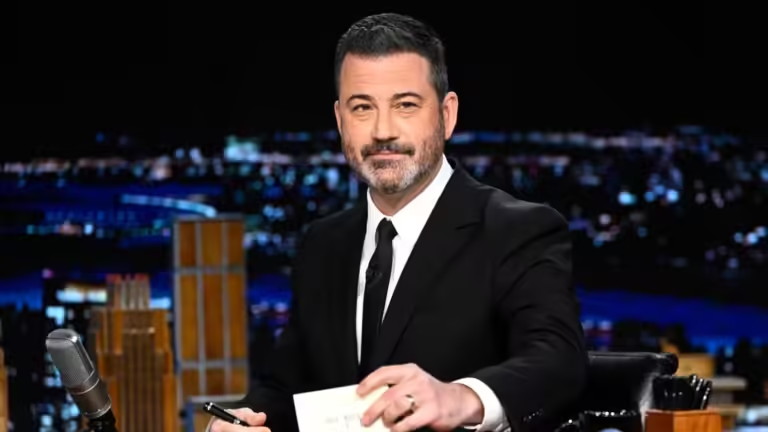Saiyaara Shatters Records with ₹20 Crore Debut

In a film industry often preoccupied with familiar faces, and recycled formulas, Saiyaara feels like someone finally exhaled. Directed by Mohit Suri, the movie opened to a thunderous ₹20 crore on Day 1, but it’s true impact isn’t just financial—it’s emotional. It speaks to audiences who crave connection over clamor, truth over theatrics.
Newcomers Ahaan Panday, and Aneet Padda don’t just arrive—they unfold. Their chemistry is quiet, but electric, built on raw emotion rather than rehearsed grandeur. Watching them is like watching two people find language through silence, healing through music, and love through shared grief.
Visually, Saiyaara is lush, and lyrical, but it’s the feeling that lingers—a sense of being understood, held, seen. As its soundtrack hums across playlists, and its story finds a home in conversations, the film is quickly becoming more than just a weekend success. It’s a gentle revolution, giving voice to the fragile, and the forgotten.
Ahaan, & Aneet: Fresh Faces, Real Feelings
Ahaan’s debut arrives with none of the bravado we often see in Bollywood launches. His performance is restrained, honest, and quietly magnetic. There’s a softness to his presence—a kind of emotional humility that makes heartbreak feel personal. Aneet, on the other hand, doesn’t perform vulnerability; she inhabits it. Her strength lies in the fragility she allows us to witness, scene by scene.

Off screen, their energy has audiences curious. Fashion houses are reportedly circling Aneet for editorial campaigns, praising her “thoughtful glamour,” while Ahaan is already earning Gen Z icon status for blending relatability with star power.
“They’re not just acting—they’re feeling. And in a film like Saiyaara, that makes all the difference,” said casting consultant, Meera Mathur.
Together, they’ve set a new tone for what romantic leads can be: emotionally available, deeply present, and compelling beyond their dialogue. If Saiyaara is the mood of the season, Ahaan, and Aneet are the heartbeat behind it.
The Music: Healing, Haunting, Heroic
The title track, a reimagined ode to the 2012 classic, is no mere throwback. With Faheem Abdullah’s haunting vocals, and Irshad Kamil’s aching poetry, it feels like a love letter written in the language of longing. Within days, it crossed 100 million streams—not because it was marketed to trend, but because it moved people.

Each song in the album carries its own emotional weight. “Dhun,” sung by Arijit Singh, is a soft unraveling—its piano notes feel like footsteps through memory. “Barbaad”, and “Tum Ho Toh” add texture, while “Rooh Ka Rishta”, and “Kya Tu Mere Ho Sakta Hai” have quietly become the soundtrack to real-life love stories, echoing through bridal aisles, and first dances.
“It’s rare when a song makes you cry, and dance in the same breath,” Neha Kakkar tweeted—and Saiyaara does just that.
What makes this album even more special is its heart: the debut of Kashmiri artists Faheem Abdullah, and Arslan Nizami. Their inclusion isn’t just musical—it’s cultural, emotional, and deeply personal. In a world of polished playlists, Saiyaara dares to be vulnerable. And that’s why it stays with you.
Industry Impact: Saiyaara’s Quiet Revolution in Bollywood
In a year crowded with sequels, reboots, and star-studded spectacles, Saiyaara arrived without noise—but made everyone listen. With a ₹20 crore opening, and a two-day total nearing ₹45 crore, Mohit Suri’s romantic drama didn’t just perform—it disrupted. No aggressive marketing, no legacy leads, no franchise safety net. Just a story that felt honest, music that lingered, and two newcomers who made audiences feel something real.

The industry is watching. Producers are now reconsidering casting strategies, shifting focus from social media metrics, and surnames to emotional authenticity. Ahaan Panday, and Aneet Padda’s debut has sparked conversations about what fresh talent can bring when given space to breathe—and feel.
Directors, too, are leaning into intimacy. The film’s success is nudging storytellers toward quieter narratives—romances built on vulnerability, not volume. Even release calendars are adjusting. Ajay Devgn’s Son of Sardaar 2 was postponed avoiding clashing with Saiyaara’s momentum—a rare move that speaks volumes.
“If Saiyaara can do it, others will follow. The future might just belong to quiet thunder,” Mohit Suri said post-release.
And maybe that’s the real shift. In a landscape obsessed with scale, Saiyaara carved out space for sincerity. It reminded Bollywood that emotional truth still resonates—and that sometimes, the most powerful stories are the ones that whisper.
Saiyaara’s Soulful Rise, and Lasting Echo
Some films make noise. Saiyaara made space. It didn’t come with fireworks, or fanfare—it came with feeling. A modest release, two fresh faces, and a story that didn’t try to impress, just tried to connect. And it did. That ₹20 crore opening wasn’t just a number—it was a sign that people are still listening when a film speaks softly.
Ahaan Panday, and Aneet Padda didn’t arrive as stars. They arrived as people—flawed, tender, and real. Their performances didn’t scream for attention; they invited it. Alia Bhatt called them “magical stars,” Arjun Kapoor said, “What a film”—but beyond the praise, there’s a quiet respect for what they brought to the screen: honesty.
In a year full of noise, Saiyaara reminded us that cinema can still be intimate. That stories don’t need scale to leave a mark—they need soul. And if this film is any indication, the future of Bollywood might just belong to those who dare to feel deeply, and speak gently.
Stay updated with the latest news on The World Times. Get all the trending City News, India News, Business News, and Sports News.



